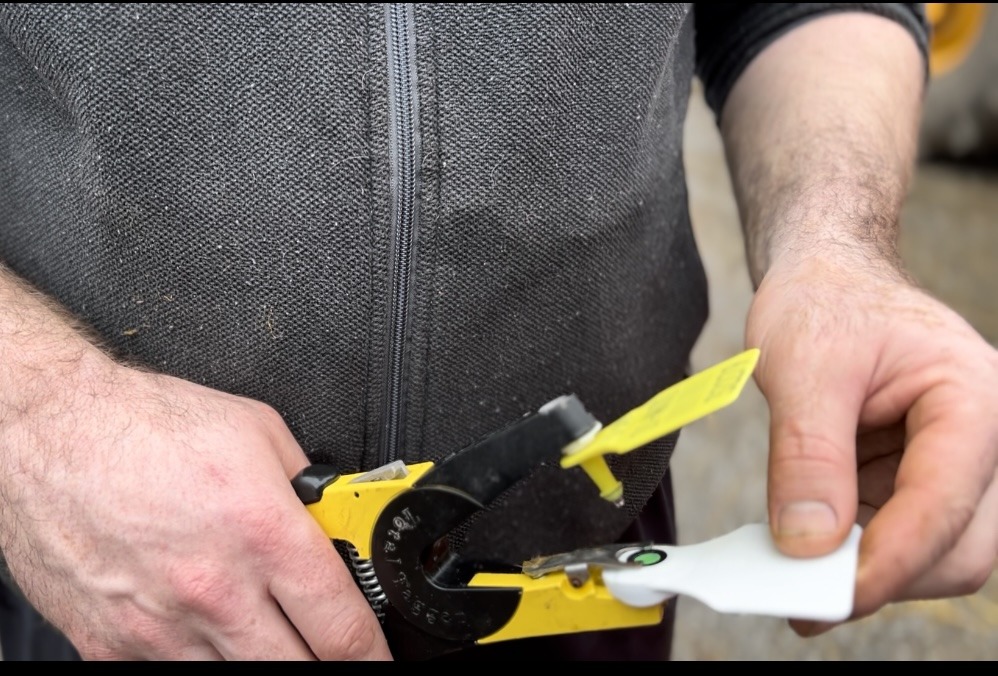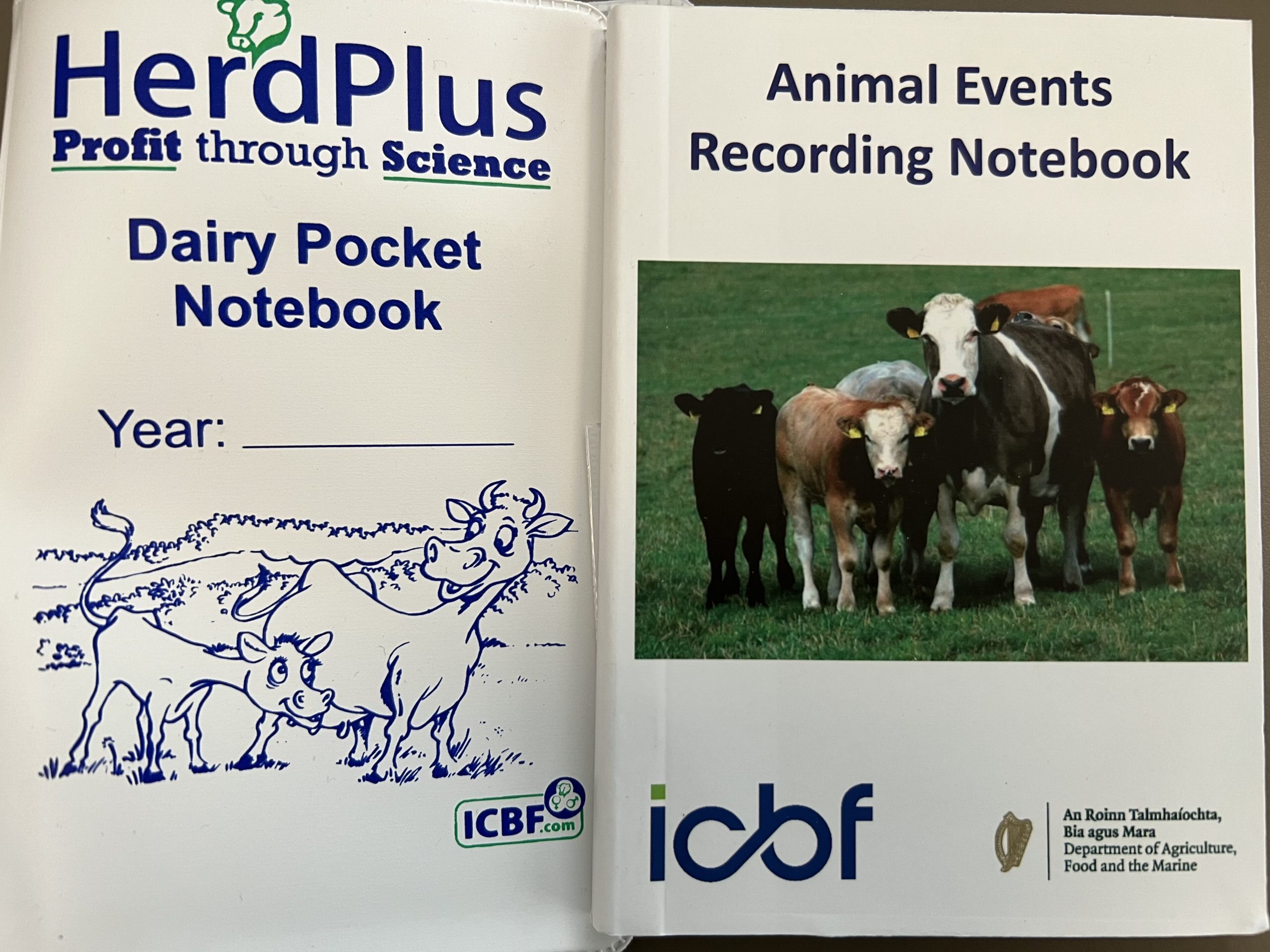“You can’t manage what you don’t measure”
On-farm recorded data is a vital element of the Irish genetic evaluation process and the creation of the Euro-Star and EBI indexes. Every herd owner in Ireland can act as a data collector for ICBF and in doing so contribute vital information to the database. Recording data may initially seem like extra hassle amongst an already busy schedule of work, but it will undoubtedly prove to be a worthwhile investment in the long term. Comprehensive levels of accurately recorded data being fed into the ICBF database will result in more reliable genetic indexes being achieved in a shorter period of time. Farmers will then be better equipped to make more informed and profitable decisions when choosing stock to breed from as a result of high reliability indexes.
You are doing a lot already
Whether farmers realise it or not, they are already providing ICBF with quite an amount of data. Farmers are obliged to submit certain details when registering calves. Data such as date of birth, sex and dam tag number are compulsory for calf registration. This data is transferred to ICBF via the Department of Agriculture’s AIM system. When farmers sell animals in the mart, ICBF receives the mart weights. Carcass information, are received for animals slaughtered in factories. So farmers are already contributing vast amounts of information to the ICBF database. All this information feeds directly into the genetic evaluations.
A little more will make a huge difference
In order to improve the reliability of genetic indexes and subsequently take Irish cattle breeding to the next level, ICBF requires a little more data to be recorded by farmers. The long term benefits will far outweigh the initial time invested in such an exercise. The following are areas where farmers can contribute extra data:
- Calf Registration
As already stated farmers are obliged to provide certain information when registering calves. There are, however, a few things that are optional. These include:
Sires: Being able to identify the sire of an animal is vitally important from a genetic evaluation point of view. Without a recorded sire, ICBF is unable to fully use an animal’s performance in genetic evaluations. The sire of a calf (stock/AI bull) can be recorded quickly and easily when registering a calf on the Agfood web site, farm software, or through the Animal Events book. A sire is the most important piece of data that can be recorded on any animal.
Calving Survey: It is very important to record the calving difficulty, as it allows ICBF to build a profile of the calving difficulty of bulls. The more calving surveys received on a bull the more reliable his calving difficulty figure will become. By having an accurate calving index available, farmers can make more informed decisions when choosing bulls to use in their herds. The calving survey data can also be recorded at registration or via the Birth Event Screen.

- Other Birth Data Events
Farmers can also record extra birth data on their new-born calves. Traits that can be recorded include:
Malpresentation: Farmers can pick from a list of malpresentations if it applies to a calf e.g. leg down, head down, backwards, etc. This data will be used to see if there is a genetic component to malpresentations.
Birth Defect: Farmers can select to record a birth defect. A detailed description of the defect can be recorded using the “Congenital Defect Survey” which is available in the ‘record birth events’ screen. An example of a defect is a navel rupture. This data will be used to see if there is a genetic component to defects.
Birth Size: Farmers are asked to score the new-born calf on size from their own visual perspective. It is important that this is done in the context of a farmers own herd i.e. a big calf to one farmer could be a small calf to another.
Birth Weight: This birth weight measurement is recorded in kgs. This data will be used to ascertain the size of a calf at birth. It will also give an idea as to the calving ability of the dam.
Chest Girth, Height at Shoulder: These measurements are recorded in centimetres using a measuring tape (see Pic. 1). These measurements are converted by ICBF to estimate the birth weight.
Calf Vigour: This is to give an idea as to the vigour (ability to get up and suck) expressed by the calf at birth. There is some evidence that there is a genetic component to calf vigour and this information will be used to develop an index for this trait.

- Reproductive Activity Events
Farmers can record certain reproductive information on their animals. These include:
Heat/Serve: AI details can be recorded on the ICBF database including date of serve, bull used and type of semen (e.g. sexed or non-sexed). Some AI technicians operate handhelds which automatically send details to ICBF. Stock bull serves can also be recorded by entering the bulls tag number or short code in place of an AI code. This data is important as it allows ICBF to calculate the gestation length of bulls and the fertility of females. It also gives the farmer expected calving dates as well as an accurate fertility report which are useful for management purposes. Heats that are observed outside of the breeding season can also be recorded.
Pregnancy Diagnosis (Scanning Results): Farmers can record the results of pregnancy scanning. Where serves are recorded scan results will verify expected calving dates. Where serves are not recorded, farmers can record the approximate number of days in calf (usually given by scanning technician). This will create an estimated expected calving date. This data can be recorded on the ICBF website or via farm software.
- Health and Disease Events
Farmers can record certain health and disease information on their animals. These include:
Mastitis/Lameness
Farmers can record incidents of mastitis and lameness on the ICBF website (www.icbf.com). It is vital that all farmers record these very important health events. The health sub-index currently makes up four percent of the overall EBI. The main reason for this low weighting is that there are currently not enough records in the database on mastitis and lameness to increase the weighting of these important traits. In order to increase the amount of data available, farmers will have to record the data on farm. When recording mastitis and lameness, farmers can also record the affected quarter/leg, as well as the treatment used. Somatic Cell Count (SCC) is the third trait that is included in the health sub-index, but unlike lameness and mastitis, data for SCC is readily available through milk recording. ICBF would love to increase the weighting of the health sub-index, but is not currently in a position to do so until more data becomes available on lameness and mastitis.
Farmers can also record data on many other health events such as, scour, pneumonia, grass tetany, milk fever, retained placenta, etc.
Summary
In order to realise the full genetic potential of the Irish Beef and Dairy herd, increased data recording is essential. The following are some useful tips to help farmers to record more data on their farms:
- Have a little notebook that you can carry around, particularly during the calving season, to record data as it happens. These are available from ICBF HerdPlus.
- Make a habit of data recording. Get into a routine of recording data at regular intervals either online or through the animal events book.
- Don’t think your data won’t make a difference. No matter how small your herd, every piece of data counts. A farmer with 10 cows can contribute as much as 200 individual data records to the ICBF database.
- Only record accurate data e.g. if you are unsure of the sire of a calf, do not record a sire. Inaccurate data is worse than no data as it is misleading.
- Join HerdPlus to see the full benefits of data recording through its various reports. You can contact ICBF for more information – [email protected] or 023 882 0452

